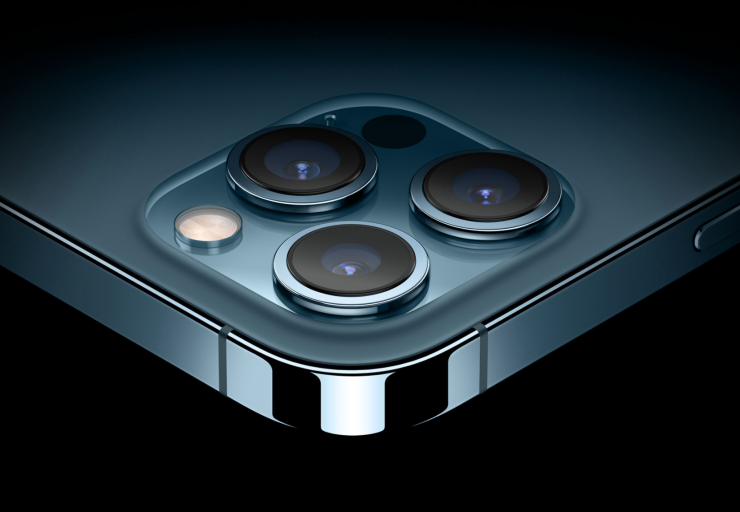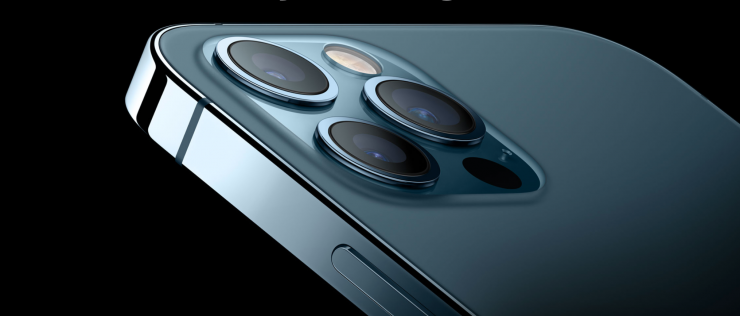Apple has announced a range of new iPhones, including the iPhone 12 Pro that some pretty impressive video specifications.
If you want to watch the entire Apple event where they unveiled the new iPhones, you can above.
10-bit HDR Recording
The iPhone 12 Pro gets the ability to record 4K 10-bit HDR video. According to Apple, it is the very first smartphone that is capable of capturing Dolby Vision HDR.
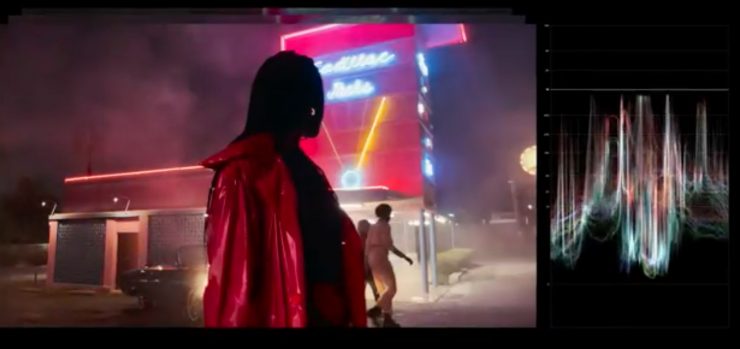
The iPhone 12 Pro takes two separate exposures and runs them through Apple’s custom image signal processor to create a histogram, which is a graph of the tonal values in each frame. The Dolby Vision metadata is then generated based on that histogram. In Laymen’s terms, it is essentially doing real-time grading while you are shooting. This is only possible due to the A14 Bionic chip.
Not only can you capture in Dolby HDR, but you can edit it directly on the phone itself. You can do this in the Photos app, iMovie, or Clips. Or from your Mac with Final Cut Pro (coming later this year).
Video Recording Specifications
- HDR video recording with Dolby Vision up to 60 fps
- 4K video recording at 24 fps, 30 fps, or 60 fps
- 1080p HD video recording at 30 fps or 60 fps
- 720p HD video recording at 30 fps
- Optical image stabilization for video (Wide)
- 2x optical zoom in, 2x optical zoom out; 4x optical zoom range (iPhone 12 Pro)
- Digital zoom up to 6x (iPhone 12 Pro)
- 2.5x optical zoom in, 2x optical zoom out; 5x optical zoom range (iPhone 12 Pro Max)
- Digital zoom up to 7x (iPhone 12 Pro Max)
- Audio zoom
- Brighter True Tone flash
- QuickTake video
- Slo‑mo video support for 1080p at 120 fps or 240 fps
- Time‑lapse video with stabilization
- Night mode Time-lapse
- Extended dynamic range for video up to 60 fps
- Cinematic video stabilization (4K, 1080p, and 720p)
- Continuous autofocus video
- Take 8MP still photos while recording 4K video
- Playback zoom
- Video formats recorded: HEVC and H.264
- Stereo recording
Better Low Light Performance
According to Apple, the iPhone 12 Pro has 87% better low-light video performance than the iPhone 11 Pro Max.
Bright HDR Display
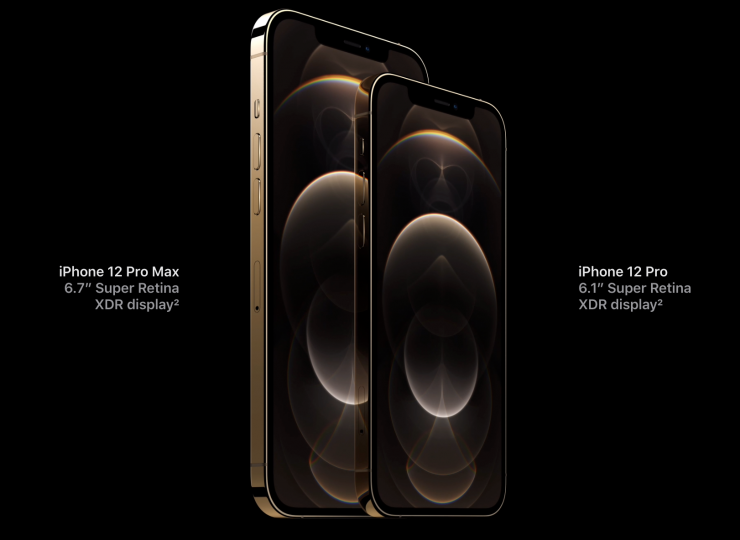
The iPhone 12 Pro’s screen has a claimed brightness of 1200nits and a contrast ratio of 2,000,000:1. The phone uses a Super Retina XDR display with a resolution of 2778 x 128. It has ppi of 458.
This is going to make it very useful as a remote monitoring device if you are using it with a camera that can stream video over WiFi. The iPhone 12 Pro would make for a good solution as a monitor and control device for the new Panasonic BGH1.
Cameras
The iPhone 12 Pro utilizes a 47 percent larger sensor and larger pixels that are claimed to dramatically increase the amount of light gathered on the wide camera. A new OIS stabilizes the sensor instead of the lens. There is also a new 65 mm Telephoto camera lets you zoom in further than before.
The optical image stabilization (OIS) on iPhone 12 Pro now makes adjustments to the Wide camera 5000 times per second. That is five times faster than iPhone 11 Pro. The iPhone 12 Pro Max has a larger Wide sensor with bigger pixels to gather more light.
Apple is now using a system called sensor-shift OIS. Until now, sensor‑shift stabilization was only really seen on mirrorless hybrids.
Camera Specifications
- Pro 12MP camera system: Ultra Wide, Wide, and Telephoto cameras
- Ultra Wide: ƒ/2.4 aperture and 120° field of view
- Wide: ƒ/1.6 aperture
- Telephoto: ƒ/2.0 aperture (iPhone 12 Pro); ƒ/2.2 aperture (iPhone 12 Pro Max)
- 2x optical zoom in, 2x optical zoom out; 4x optical zoom range (iPhone 12 Pro)
- Digital zoom up to 10x (iPhone 12 Pro)
- 2.5x optical zoom in, 2x optical zoom out; 5x optical zoom range (iPhone 12 Pro Max)
- Digital zoom up to 12x (iPhone 12 Pro Max)
- Night mode portraits enabled by LiDAR Scanner
- Portrait mode with advanced bokeh and Depth Control
- Portrait Lighting with six effects (Natural, Studio, Contour, Stage, Stage Mono, High‑Key Mono)
- Dual optical image stabilization (Wide and Telephoto)
- Sensor-shift optical image stabilization (iPhone 12 Pro Max Wide)
- Five-element lens (Ultra Wide); six‑element lens (Telephoto); seven-element lens (Wide)
- Brighter True Tone flash with Slow Sync
- Panorama (up to 63MP)
- Sapphire crystal lens cover
- 100% Focus Pixels (Wide)
- Night mode (Ultra Wide, Wide)
- Deep Fusion (Ultra Wide, Wide, Telephoto)
- Smart HDR 3 with Scene Detection
- Apple ProRAW*
- Wide color capture for photos and Live Photos
- Lens correction (Ultra Wide)
- Advanced red-eye correction
- Photo geotagging
- Auto image stabilization
- Burst mode
- Image formats captured: HEIF and JPEG
Price & Availability
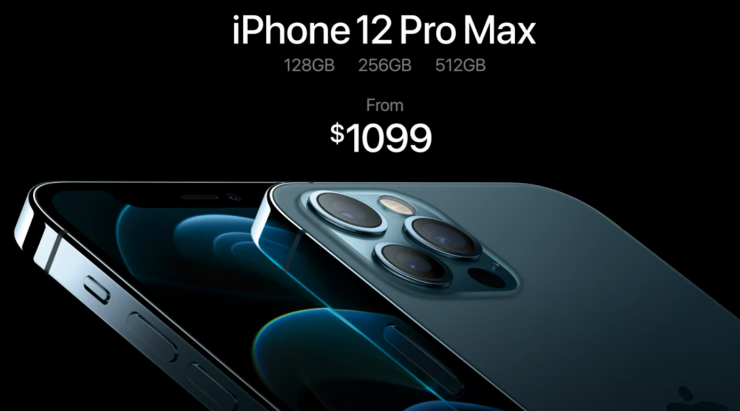
The iPhone 12 Pro starts at $999 USD for the 128GB version. The iPhone 12 Pro Max starts at $1099 USD for the 128GB version.
Thoughts
Shooting video on mobile phones has come a long way over the last few years, and in the right hands, amazing results can be achieved. You do still have to clearly remember that a lot of the flashy videos you see that were filmed on an iPhone had actors, large crews and a ton of lighting.
Being able to shoot in 10-bit HDR is certainly a nice feature and with the better low light capabilities and the bright display, you could absolutely use this in professional environments. Yes, it is still just a phone, but in the right conditions you can obtain good results.
It will be interesting to see how apps such as FilmicPro take advantage of these new features in the iPhone 12 Pro.
Smartphone video technology, at least in my opinion, seems to be accelerating at a fast pace, and every year we seemingly get better options becoming available. It is quite amazing what smartphones are now capable of when it comes to video performance, especially given the fact that video is just one of many features features in an iPhone.

